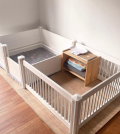The Tools Needed to Get Started with Wood Carving
Looking for a hobby to express your creative side? From learning crochet patterns to getting into the world of art through painting, there are many ways to unleash your inner creator. But if you have a limited budget to work with, one great hobby that doesn’t require you to purchase expensive tools and supplies is wood carving.
Carving intricate shapes and objects out of wood is more than just a way to spend time; it’s a form of self-expression that offers several therapeutic benefits. Even though you might not be particularly good at it at first, with enough effort and practise, your abilities will quickly advance. To get started, here are the essential wood sculpting tools you need:
Safety Equipment

While not technically wood carving tools, PPE is important if you’re getting into this activity. Although this hobby doesn’t require you to dress in safety gear from head to toe like welding does, it still has its risks. After all, it involves razor-sharp blades as well as flying chips of timber.
That said, always put on protective goggles to prevent occasional shavings from getting into your eyes. Also, pay attention to the sharp knife edge and avoid placing body parts in front of it. Always wear protective gloves to prevent cutting your hands when carving.
Carving Knives
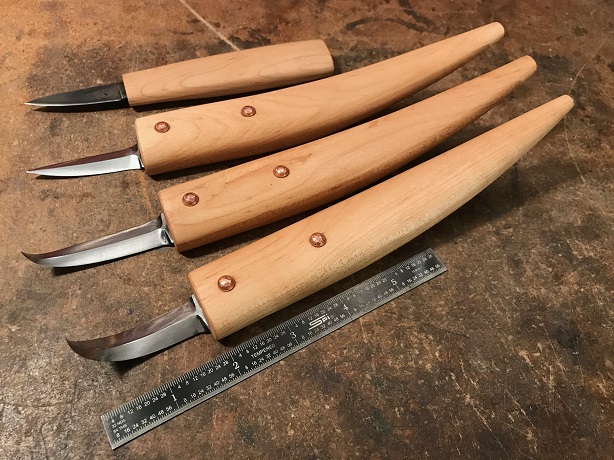
Due to their versatility and range of sizes, carving knives might be some of the best wood carving tools for beginners. Many creative tasks can be finished with just a carving knife. For instance, you can use it to add features, carve off pieces of various sizes, or trace an outline in the timber.
There are two types of knives you can use: those used for soft work and those used for hardwood work. You will also need to practise controlling your cuts because there is a vast difference between soft and hard wood. To get the cut you want, your knives also need to be exceedingly sharp.
Chisels
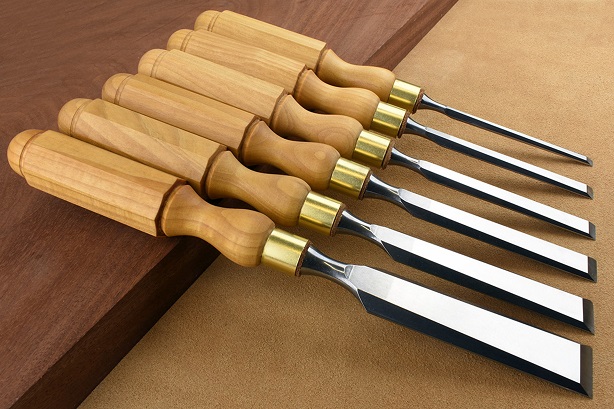
You’ll need a selection of chisels in addition to sharp, high-quality knives. Depending on the size and type of cut you want to make, chisels come with different points.
Some chisels have a flat, bevelled edge that makes them resemble screwdrivers, but it is easy to tell them apart. And some feature a tip that is V-shaped or created with a particular use in mind.
For instance, a paring chisel is used to shave off a thin piece of timber instead of removing a sizable chunk of timber. Skew chisels, also known as corner chisels, are chisels with beveled edges that are cut at an angle.
Gouges

A gouge is a carving tool with a handle resembling a chisel that requires a similar carving motion. The only difference is that it has a rounded tip.
When you press or strike them with a wood carving mallet, gouges “scoop” out the timber. They can be used to carve curves in the timber or hollow out tiny or large parts. They also make it possible to swiftly remove excess shavings. A gouge allows you to form a circle if you stab it repeatedly into the wood in a side-by-side pattern.
Veiner

The handle and shape of a veiner are comparable to those of a gouge. The veiner is different in that it has longer sides and creates a U-shape when stabbed into a piece of timber. That said, it makes sense that another name for it is a U-Gouge.
The veiner hollows out a “vein” or thin groove in the timber as it is struck against or driven through the material. It’s excellent for lines and minute elements in the project’s design.
Fluters, also known as huge U-gouges, are used to carve the broad grooves, or “flutes,” that are frequently observed in Greek columns.
Mallet
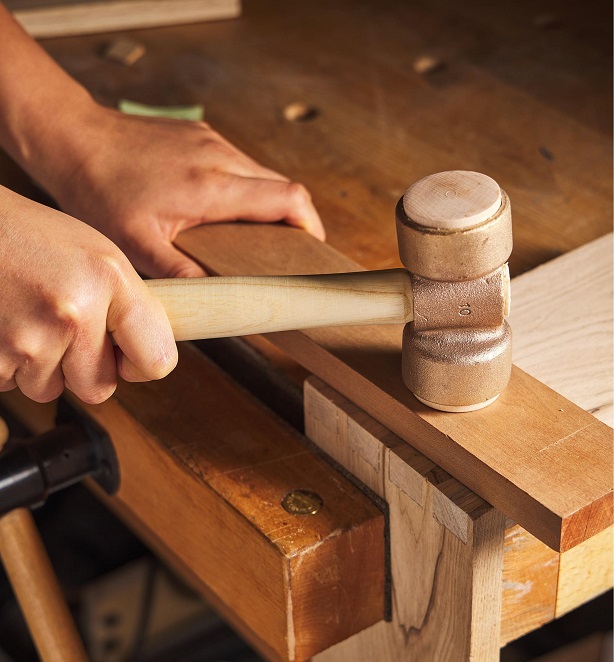
A mallet is another essential part of your set of wood sculpting tools. It’s what you’ll use to strike the chisels, gouges, veiners, and other tools of a similar nature. You can also produce deeper cuts or cut through timber that is too soft to be cut with a carving tool by pulling or pressing it with a mallet.
Furthermore, because the wood has a range of densities, applying hand pressure might occasionally cause the tool to lose control if you carve from a thick region into a softer section. While using a mallet, the cutting edge will move a set amount each time the tool is struck.
Look for a shock-absorbing mallet that will generate the necessary pressure without using an excessive amount of difficult-to-control force.
Bench Knives
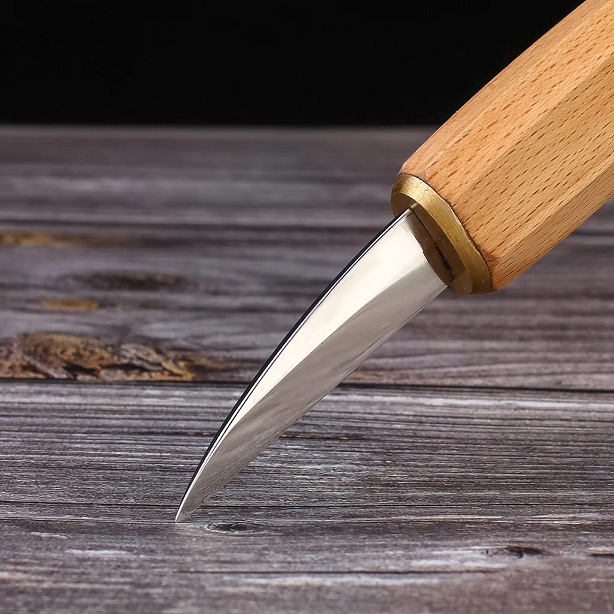
In terms of appearance and use, bench knives differ from carving knives. They have a blade that is less than two centimetres long and a much larger handle for holding. Think of a powerful scalpel with a thick handle.
You can securely and more precisely reach closer to the wood when using a bench knife to carve out fine details and smaller components. To remove bigger chunks of wood for precision work, you can also dig into the wood.

